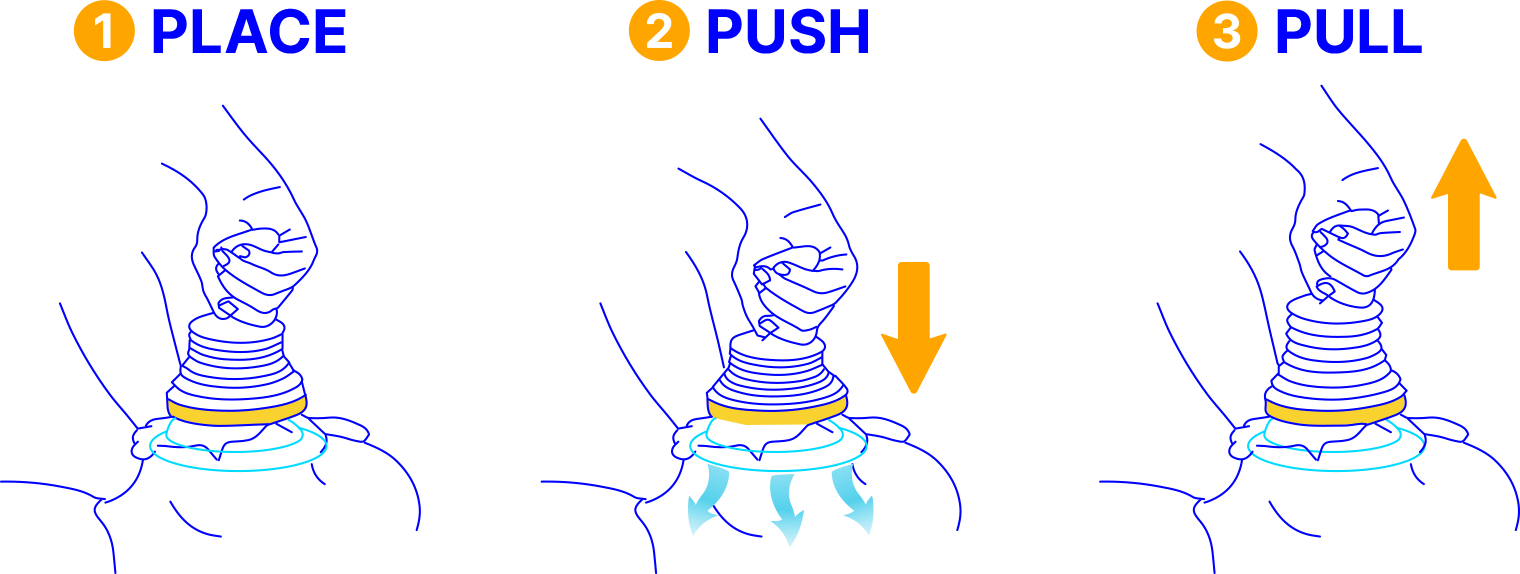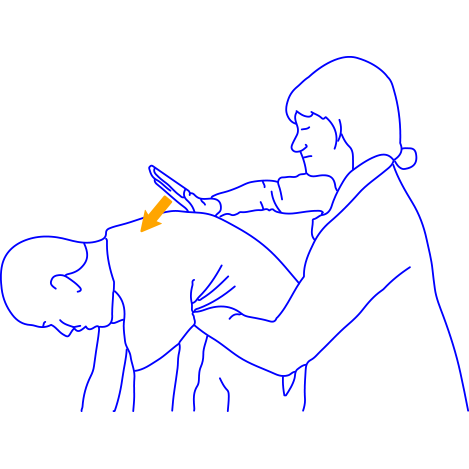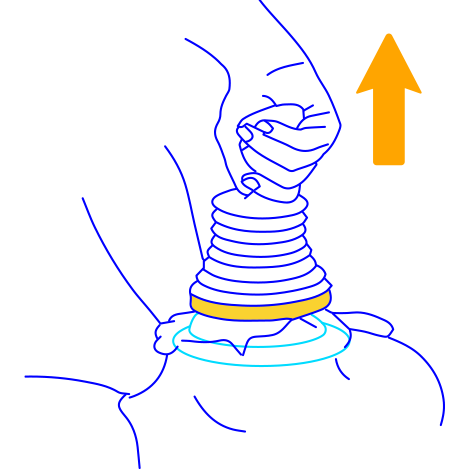How to use your LifeVac®
Designed to be super simple
LifeVac® is an emergency device designed to assist in clearing an obstructed airway in a choking victim.

LifeVac® can be successfully operated with no training.
Watch the video or read the below guide for detailed step-by-step instructions.

Step 1: Assess the Situation
- Check for Signs of Choking: If someone is unable to speak, cough, or breathe and is showing signs of distress, they may be choking.
- Stay Calm: Quick, calm action is essential. If the person can still cough, encourage them to keep coughing to try to dislodge the object on their own.
- Try First Aid: Deliver back blows, firmly between the shoulder blades. If these fail to dislodge the object, try chest thrusts. If no success, reach for LifeVac®.

Step 2: Prepare the LifeVac® Device
- Select the Appropriate Mask:
- Choose the correct mask size (adult or child) from your LifeVac® kit.
- Attach the mask to the main unit of the LifeVac® device, ensuring it is securely fitted.
- Position the Mask:
- Place the mask over the choking victim’s mouth and nose.
- Ensure a firm seal is created to maximise the suction effect. The victim should either be lying down or sitting, depending on the situation.

Step 3: Use the LifeVac® Device
- Hold the LifeVac®
- Firmly grasp the handle of the LifeVac® device.
- Pull the Handle:
- Pull the handle sharply upward with both hands. This action creates a powerful suction that aims to dislodge the object from the airway.
- It may be necessary to perform this action more than once if the object does not dislodge on the first try.
Step 4: Check the Airway
- Inspect the Victim’s Mouth: After using the LifeVac®, check the mouth and airway for the dislodged object.
- Repeat if Necessary: If the airway is still blocked, reposition the mask and repeat the pulling motion until the obstruction is cleared.
Step 5: Follow-Up Care
- Seek Medical Attention: Even if the object is successfully removed, it is crucial to seek medical evaluation for the victim as choking can cause complications.
- Monitor the Victim: Keep the person calm and monitor their breathing until professional help arrives.